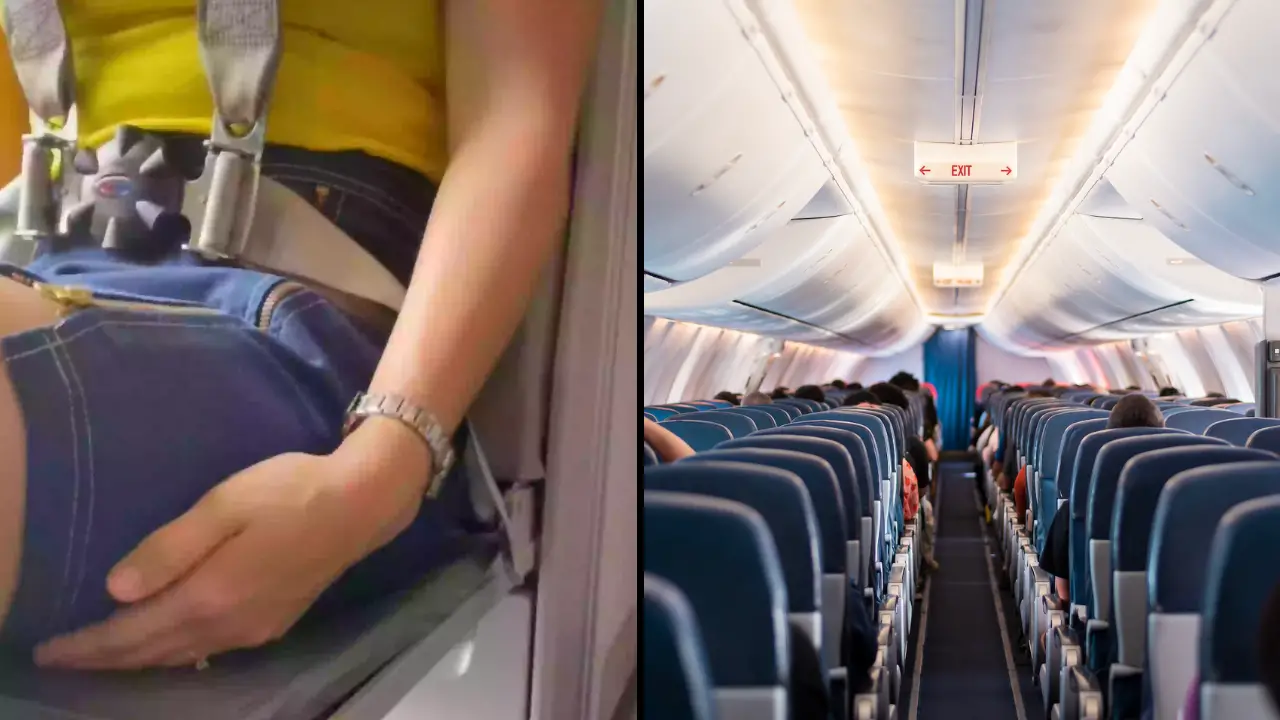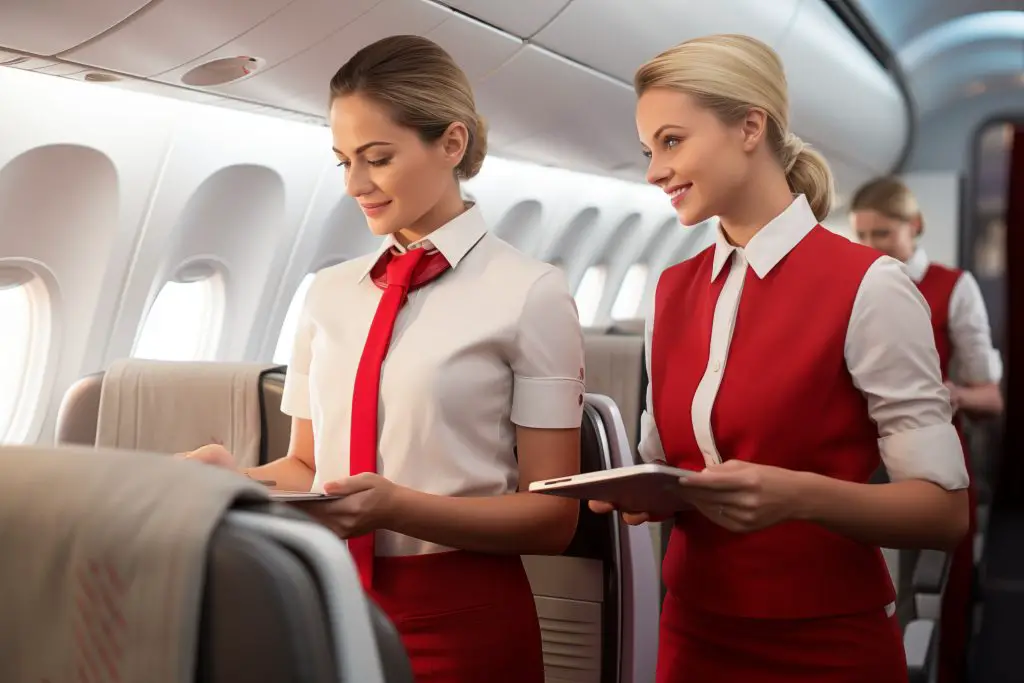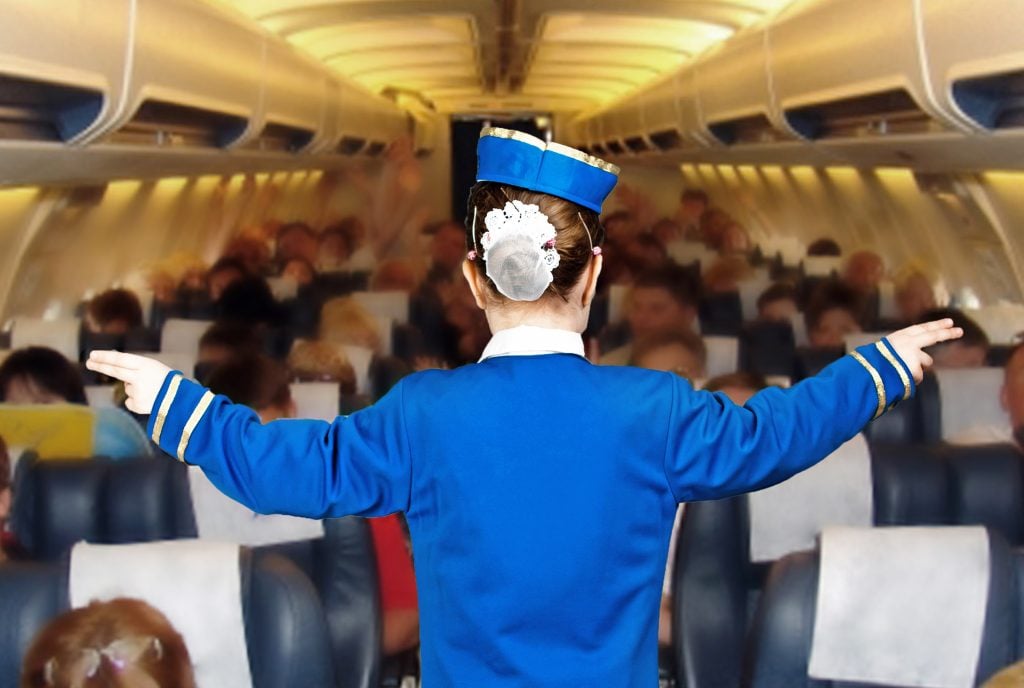
Credit: @_henrylim_/TikTok & Adobe Stock
Flight Attendant Explains Why You Should Always Sit On Your Hands During Takeoff
There’s an important reason why flight attendants sit on their hands during takeoff and landing.
Flight attendants have responsibilities that extend beyond assisting passengers with seating and serving refreshments.
Their primary role is ensuring safety and security throughout the flight, which includes following specific protocols during critical phases such as takeoff, landing, and instances of severe turbulence.
During crucial moments of a flight, such as takeoff and landing, cabin crew members adopt a specific stance known as the brace position.

Now 6-year flight attendant Court Acree has explained the reason why you should sit on your hands during take-off to Islands.
According to the Federal Aviation Administration (FAA), the passenger brace position involves sitting as far back as possible, ensuring seat belts are tightly fastened, leaning forward with the head against the seat in front, and keeping hands beside the head or grasping the lower legs.
Meanwhile, the brace position for flight attendants is distinct and varies depending on airline regulations and jump seat configurations.
Flight attendants must maintain a rigid position in their jump seats, ensuring their backs and necks are firmly against the seat.
Their feet should be positioned flat on the floor, and their knees should be together.
Depending on airline policies, their hands are placed either on their thighs, on their knees, or tucked underneath their legs.
This positioning helps prevent injury by stabilizing the body during sudden movements or impact.
While the exact posture may differ based on whether the seat faces forward or backward, the overarching goal is to ensure safety.

While seated in their designated positions, flight attendants engage in a ‘silent review,’ a mental checklist of emergency procedures, per Reader’s Digest.
This includes identifying nearby emergency equipment, reviewing door operations, considering able-bodied passengers who may assist in an evacuation, and scanning the cabin for any potential safety concerns.
This practice ensures they are fully prepared to respond swiftly in case of an emergency.
An interesting aspect of the brace position is that some flight attendants choose to place their hands under their thighs.
While this is not a regulatory requirement, some believe it helps minimize the ‘startle reflex’ during unexpected turbulence, allowing them to maintain focus and respond effectively.
However, this practice is not universally observed across airlines, particularly in the U.S.

In the event of a planned emergency landing, flight attendants modify their brace position slightly.
While maintaining a firm lower-body posture, they place one hand over the other behind their head, keeping their elbows tucked in.
This position helps protect their heads from debris while allowing them to issue loud and clear emergency commands to passengers.
Due to extensive training and routine practice, many flight attendants find themselves instinctively adopting these positions even when flying as passengers.
Additionally, when working in cold environments, tucking hands under their thighs can provide extra warmth. Ultimately, these procedures are ingrained in their professional routines, reinforcing their readiness to handle emergencies efficiently.
By consistently practicing these safety measures, flight attendants ensure not only their own security but also enhance their ability to assist passengers in critical situations.
Whether performing a silent review, adopting a brace position, or preparing for emergencies, their training and adherence to safety protocols are essential to maintaining in-flight security.
Related Article: Model Who Called For Planes To Have Bigger Seats Hit Back At Trolls Who Told Her To ‘Buy Two Seats’
Related Article: Flight Attendant Explains Why You Shouldn’t Wear Shorts On A Plane
Want more stuff like this?
Get the best viral stories straight into your inbox!